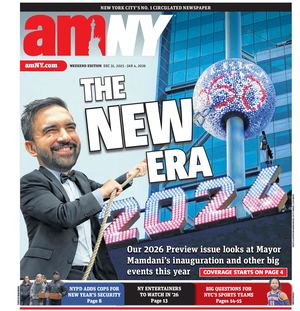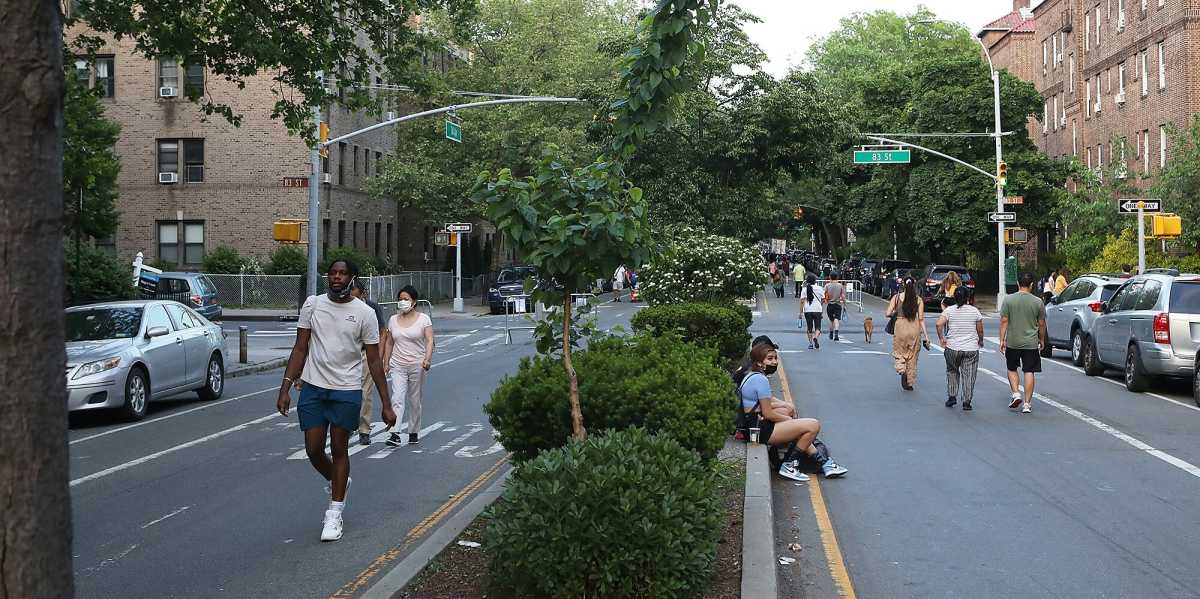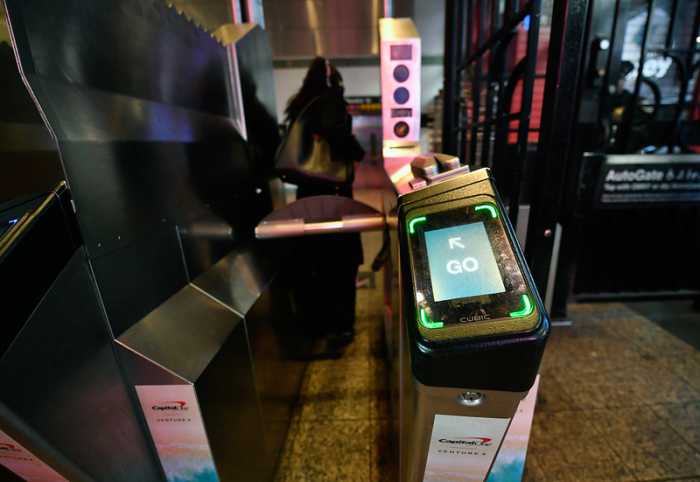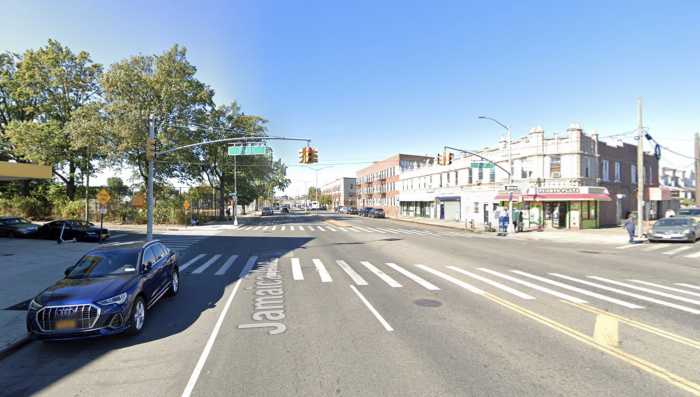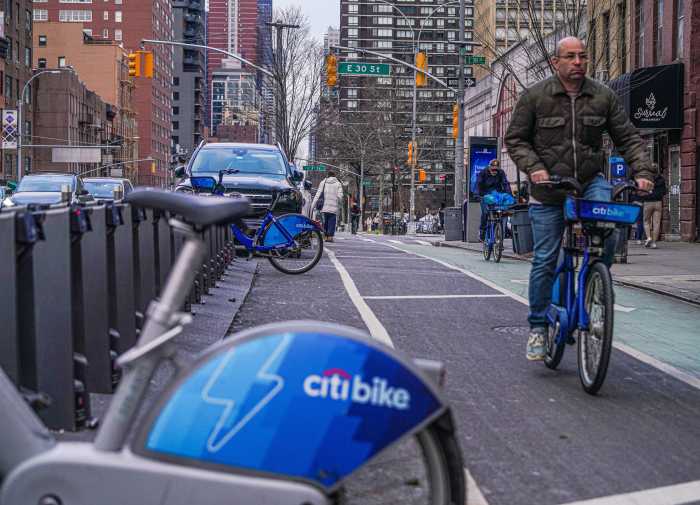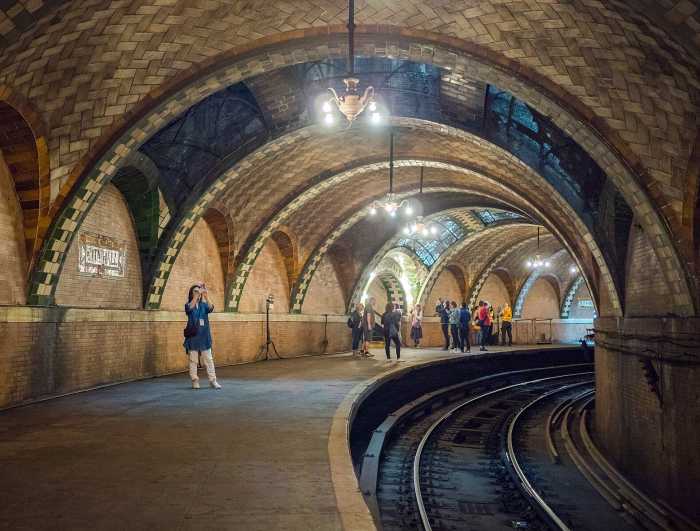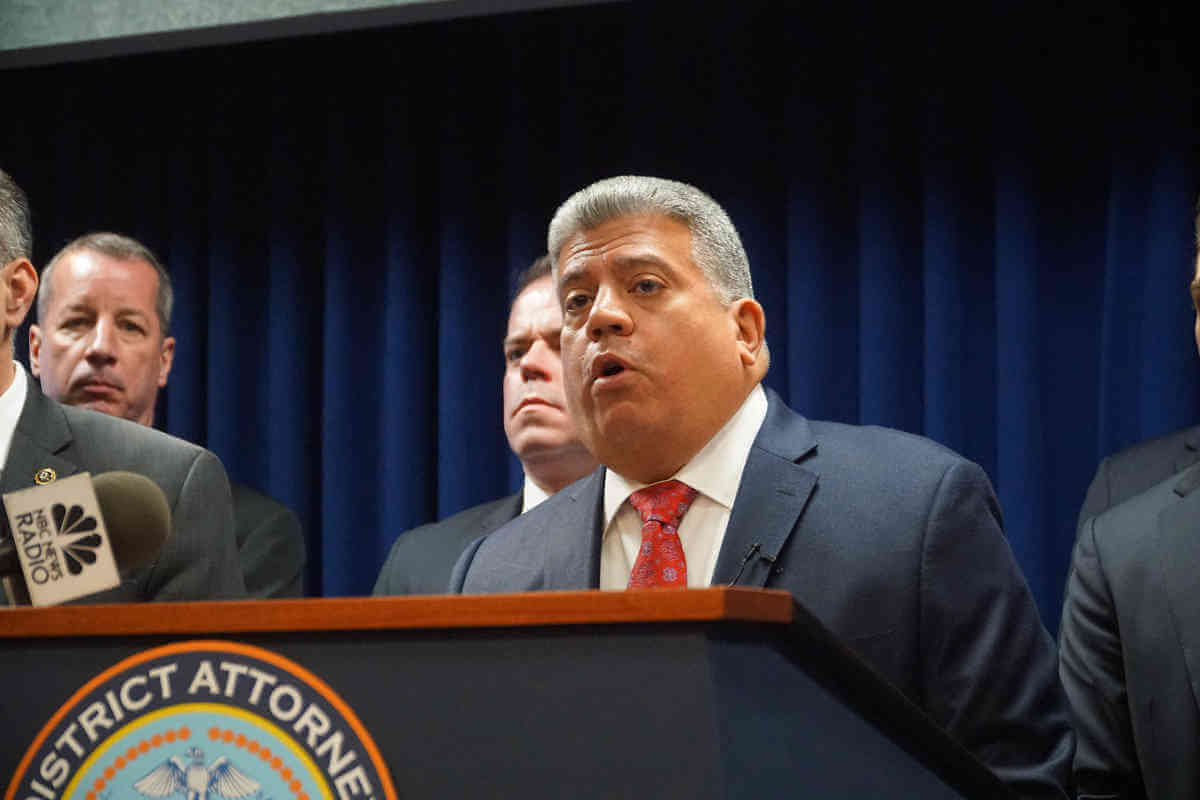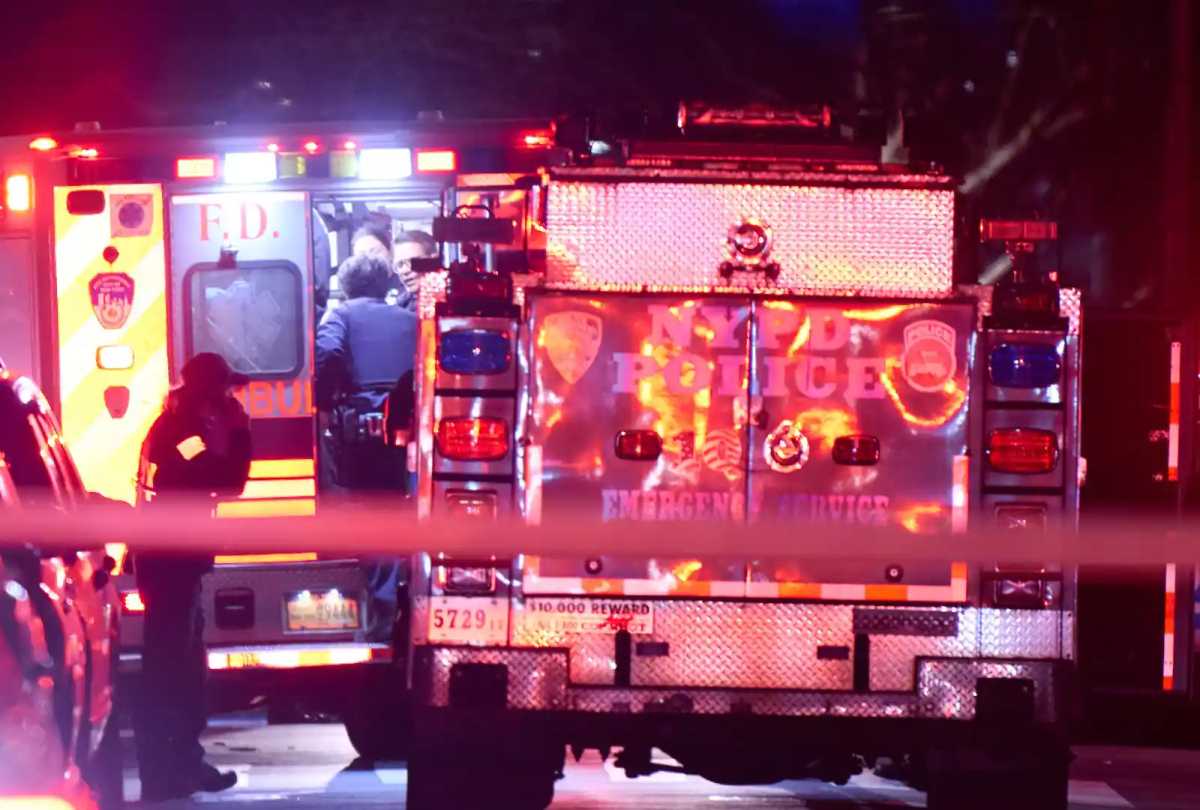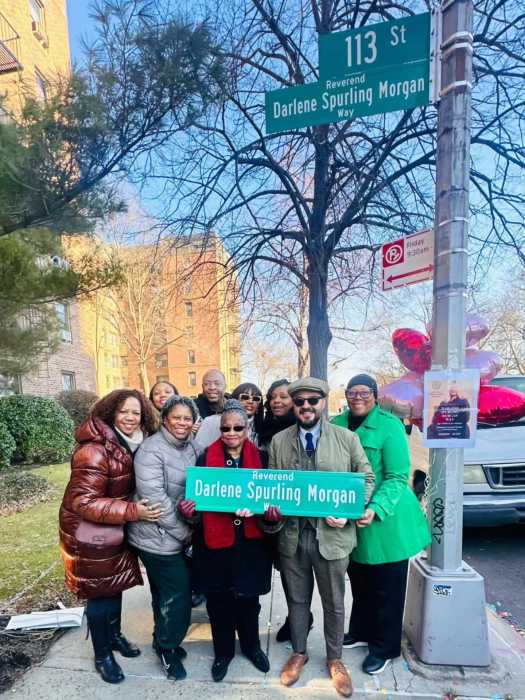A dozen New Yorkers with disabilities have filed a federal lawsuit against the city, claiming that its Open Streets program violates the Americans With Disabilities Act, with the hope of scuttling the program.
The lawsuit, filed in Brooklyn Federal Court Monday, says everything about Open Streets is a ruse down to its name, deeming it “Orwellian Newspeak” and arguing it would more appropriately be called “Closed Streets.” The plaintiffs argue that by occasionally closing off some streets to car traffic, seniors and people with disabilities who can only travel by motor vehicle — particularly those living on Open Streets — are facing illegal discrimination.
“The program results in the de facto closure of New York City’s public avenues and streets to individuals with disabilities — whose only or primary access to the streets and to the buildings, businesses and services on the streets — is through the use of motor vehicles,” the 12 plaintiffs, who live in Manhattan, Brooklyn, and Queens, allege in the suit, which names the city and various organizations managing Open Street locations as defendants.
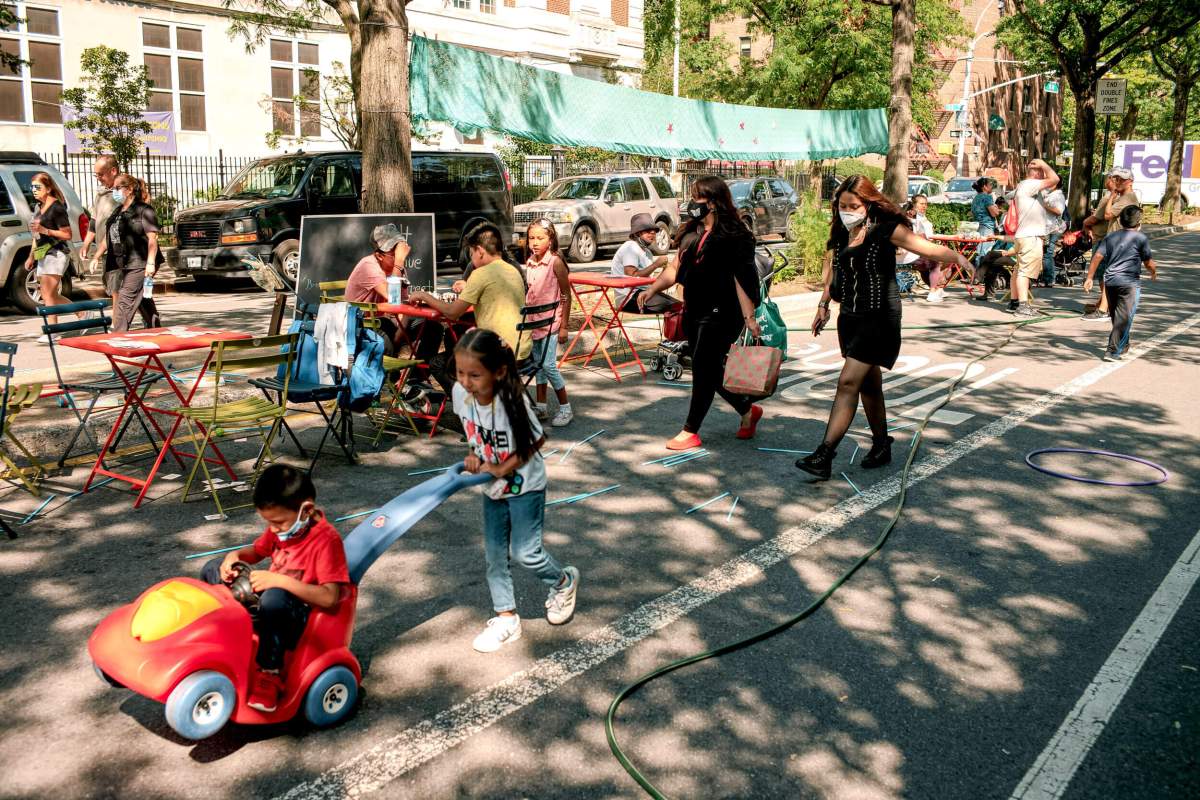
Open Streets began at the height of the COVID-19 pandemic, intended to provide open space on local streets for locked-down city residents. The program proved one of the more popular pandemic-era policies, and has returned each summer, with this year’s program set to encompass more than 300 city blocks across all five boroughs.
Volunteers with local civic groups manage the open streets, which are typically in operation for a set number of hours per day, mostly in summer months. The volunteers set up the barricades to block off car traffic, leaving the streets for the exclusive use of pedestrians and cyclists.
Some Open Streets are entirely closed off to motor vehicles except for emergency services, while others allow access to locals seeking to park or drivers making deliveries. They often are the site of outdoor dining, public art displays, and community programming and performances. The city has declared it intends to redesign some popular Open Streets, like Vanderbilt Avenue in Brooklyn and 34th Avenue in Queens, to more permanently reflect a pedestrian focus, with the hope that barriers might not be needed.
In 2021, a Siena College poll, commissioned by safe streets advocacy group Transportation Alternatives, found more than 6 in 10 New Yorkers supported expanding Open Streets in their neighborhoods. Last October, the Department of Transportation, which oversees the program, released a study finding Open Streets provided a considerable economic boost to local businesses along their stretches.
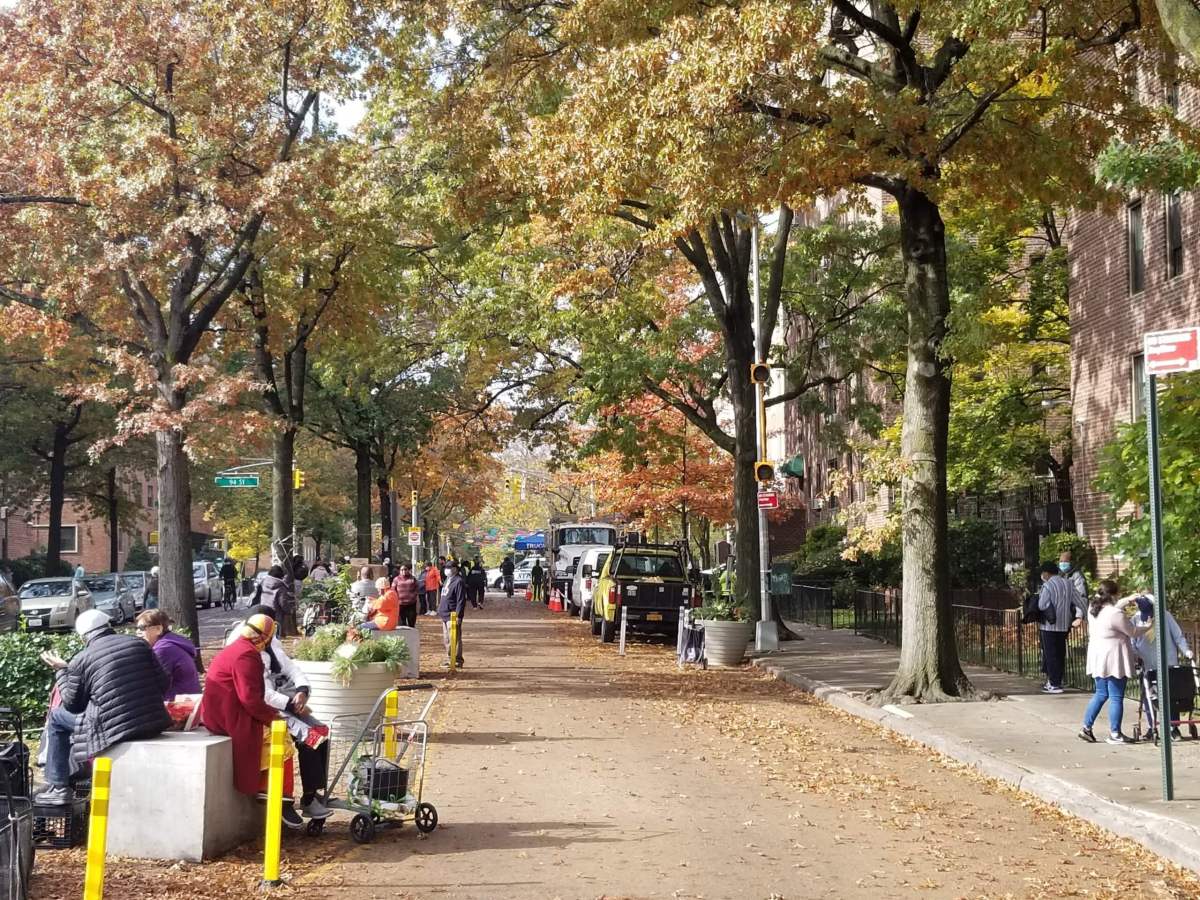
But the plaintiffs say that DOT is ignoring the needs of more than half a million New Yorkers with limited mobility by pursuing the program. They even contend DOT is specifically beholden to “anti-car lobby” groups like Transportation Alternatives, whom they explicitly liken to “brown shirts,” a term for Nazi soldiers.
The lead plaintiff is Jess Charles, a 94-year-old with Addison’s Disease, who lives on the Avenue B Open Street in the East Village. Despite having limited ability to walk, Charles says that he has to schlep two blocks from home to get picked up by a car service for medical appointments and social occasions.
The suit alleges that the last time that Charles had a fall paramedics had to “scramble to remove the barricades” on the Open Street in order to reach him. “Mr. Charles fears that he may need an ambulance again in the future,” reads the suit, “but the barricades will prevent or delay access.”
Another plaintiff is Upper West Side resident Gerard Feidner, 68, who lives on 103rd Street, an Open Street. Feidner has heart disease and diabetes, which affects his mobility, and he has little choice but to drive to appointments and functions. Given his medical condition, it is “exceptionally difficult” for him to travel with barricades across his street.
[Editor’s Note: following publication, a volunteer coordinator for the 103rd Open Street contested Feidner’s claims, providing photos showing the Open Street’s barricades are left on the side of the road. The barricades don’t block traffic but note the speed limit is 5 miles per hour]
Mill Jonakait, 77, of Fort Greene, is another plaintiff, and she was born without a femur in her right leg, which is 10 inches shorter than her left.
She walks with a limp and becomes fatigued after a few blocks. Since nearby Willoughby and South Portland avenues became Open Streets, she says she cannot find parking near her home on Carlton Avenue, forcing her to walk farther to and from her car.
The plaintiffs are seeking a federal injunction against the program, which would effectively halt it and restore the roadways to unfettered motor vehicle access.

The DOT did not provide comment on the specifics of the lawsuit.
“Open Streets enhances safety, accessibility, and equity for a large number of New Yorkers using the roads, including seniors and people with disabilities,” said DOT spokesperson Scott Gastel. “The City will review the case.”
Transportation Alternatives declined to comment.
On Wednesday, DOT will hold a virtual hearing on a newly proposed set of agency rules governing Open Streets, which deal with everything from applications, management, staffing, and prohibited acts. Banned behaviors include flying a kite, feeding squirrels or building a fire. New Yorkers are also not allowed to place tables or chairs on an Open Street without a permit.
But the stipulations are facing backlash from the advocacy community, who argue they make the program unnecessarily punishing to the volunteers running the sites, with violations of any rule subject to a $500 fine. Safe streets advocacy group Open Plans contends the rules demonstrate DOT is making the program “increasingly cumbersome and bureaucratic.”
“These rules make it clear it is harder and harder to volunteer for the city,” the group wrote in its testimony. “The city is offloading responsibility for their program onto volunteers. Big picture, if the City wants people to use the streets as easy as a vehicle can, they shouldn’t require a permit, site plan, run of show and to indemnify the City to do so.”
Read more: When to Use MTA Train Emergency Brakes
